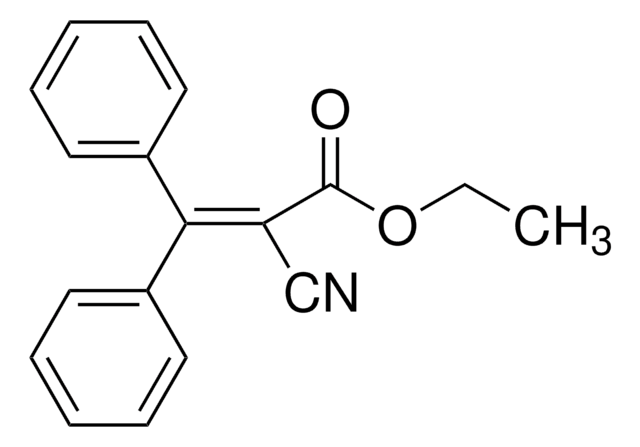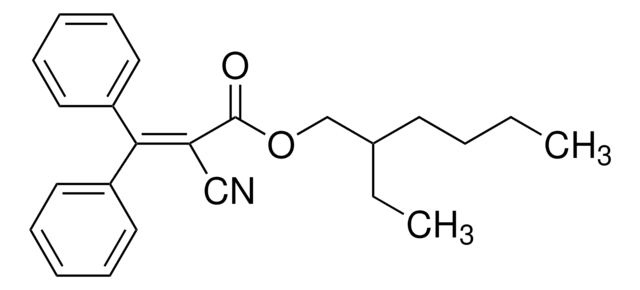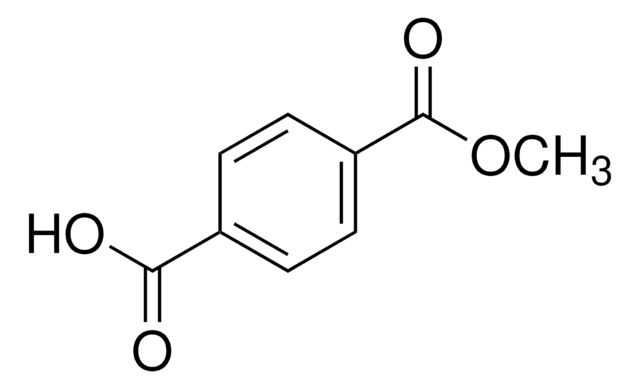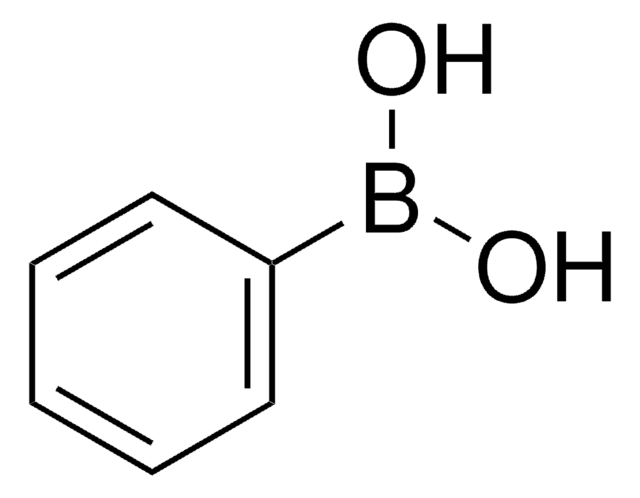SMB00953
2-Cyano-3,3-diphenylacrylic acid
≥95%
Sinônimo(s):
α-Cyano-β-diphenylacrylic acid, 2-Cyano-3,3-diphenylpropenoic acid
About This Item
Produtos recomendados
fonte biológica
synthetic
Nível de qualidade
Ensaio
≥95%
forma
solid
peso molecular
249.26 g/mol
condição de armazenamento
(Tightly closed. Dry.)
técnica(s)
HPLC: suitable
cor
white to off-white
temperatura de armazenamento
2-8°C
InChI
1S/C16H11NO2/c17-11-14(16(18)19)15(12-7-3-1-4-8-12)13-9-5-2-6-10-13/h1-10H,(H,18,19)
chave InChI
VSXIZXFGQGKZQG-UHFFFAOYSA-N
Descrição geral
Aplicação
Ações bioquímicas/fisiológicas
Características e benefícios
- High quality compound suitable for multiple research applications
- Compatible with a wide variety of chromatographic and spectrometry techniques
Outras notas
Código de classe de armazenamento
11 - Combustible Solids
Classe de risco de água (WGK)
WGK 3
Ponto de fulgor (°F)
Not applicable
Ponto de fulgor (°C)
Not applicable
Escolha uma das versões mais recentes:
Certificados de análise (COA)
Lamentamos, não temos COA para este produto disponíveis online no momento.
Se precisar de ajuda, entre em contato Atendimento ao cliente
Já possui este produto?
Encontre a documentação dos produtos que você adquiriu recentemente na biblioteca de documentos.
Nossa equipe de cientistas tem experiência em todas as áreas de pesquisa, incluindo Life Sciences, ciência de materiais, síntese química, cromatografia, química analítica e muitas outras.
Entre em contato com a assistência técnica





![Hexyl 2-[4-(diethylamino)-2-hydroxybenzoyl]benzoate analytical standard](/deepweb/assets/sigmaaldrich/product/structures/171/239/18149257-0ac2-4ee5-8e7c-b0086ca9ee81/640/18149257-0ac2-4ee5-8e7c-b0086ca9ee81.png)

